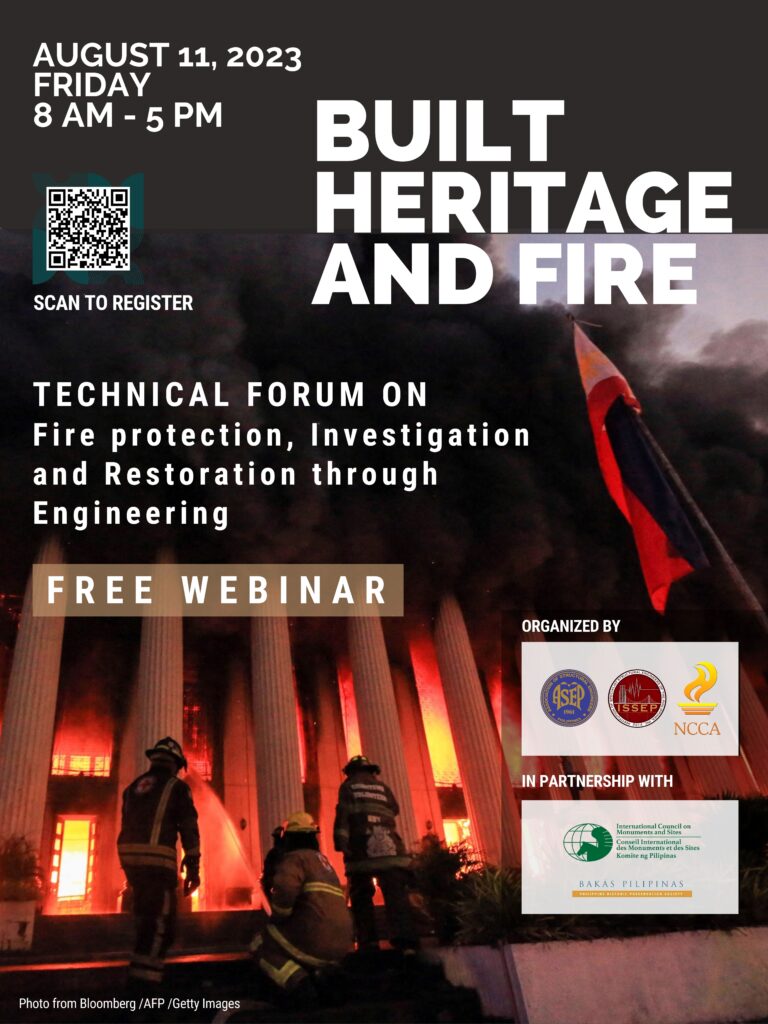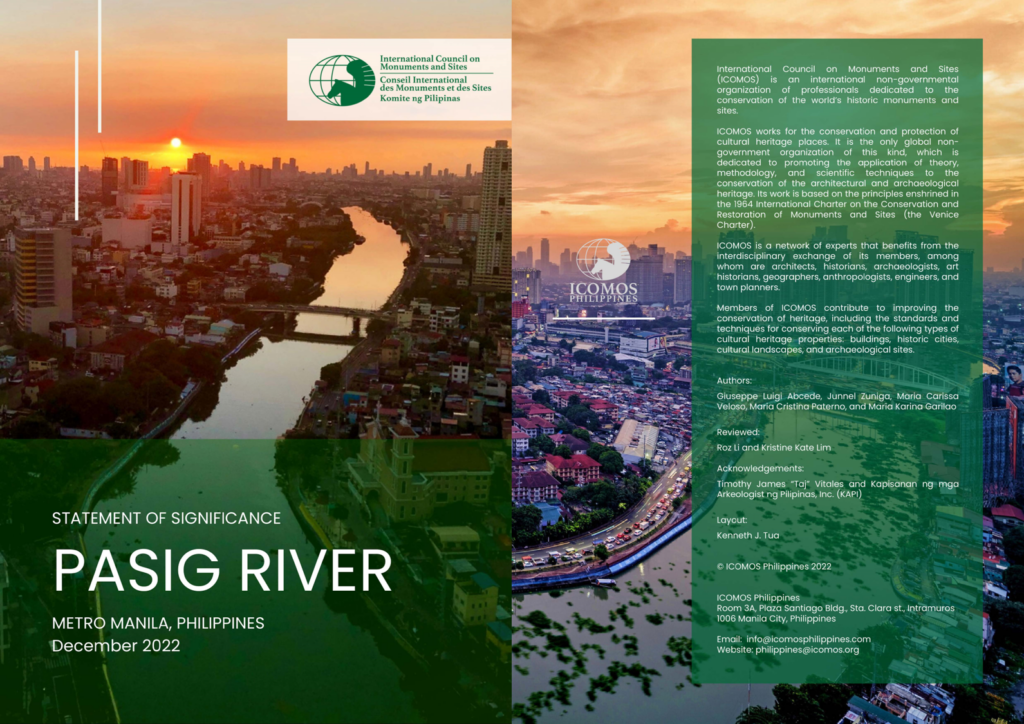ICOMOS Philippines in cooperation with the Association of Structural Engineers of the Philippines (ASEP), the Institution of Specialist Structural Engineers of the Philippines (ISSEP), the National Commission on Culture and the Arts (NCCA), and Bakás Pilipinas, bring international and country-based experts for a hybrid Technical Forum on “Built Heritage and FIRE: Fire protection, Investigation, and Restoration through Engineering”.

The event will be held from 8:00 AM, Manila Time on August 11, 2023, Friday at the Metropolitan Theater of Manila (The MET) simultaneously streamed via online Zoom Conferencing Platform.
This forum intends to bring experts, professionals, and stakeholders to address the specific challenges and complexities associated with the Manila Post Office fire and fire-related incidents to built heritage, and develop possible strategies for its restoration. This also extends to addressing the concerns of fire risk management and restoration of cultural heritage in the country.
The Topics and Speakers are as follows:
Protecting our Cultural Heritage from Fire: Understanding the Challenges and Opportunities to Effectively Manage Fire by Christopher Marrion PE, FSFPE, MScFPE, President of Marrion Fire & Risk Consulting PE, LLC, and President of the International Committee on Risk Preparedness
Opportunities to Manage Fire Risk Through Traditional Knowledge and Community Engagement by Rohit Jigyasu, ICORP Vice President and UNESCO Chair on Cultural Heritage Management and Risk Management
Structural Evaluation and Rehabilitation of Fire-Damaged Structures by Stephen Kelley, SJK Preservation Architect/Engineer, ISCARSAH Past President
Burning for Heritage: Fire Threats to Built Heritage in Manila by Erik Akpedonu, Ateneo De Manila University, and ICOMOS Philippines Former Treasurer
Fire-Induced Effects on Concrete Material and Structure by Dr. Rodolfo P. Mendoza Jr., D.ENG, M.ASEP, ASEP Secretary
The Overall Approach to Assessing a Fire-Damaged Structure: Philippine Case Studies by Engr. Carlos M. Villaraza, F.ASEP, ASEP Past President
Electrical Safety Audit on Historic Buildings by Engr. Tristan G. Beriña, REE, Member, Electrical Safety Committee, Institute of Integrated Electrical Engineers of the Philippines

To participate via Zoom kindly register in this REGISTRATION LINK or use the QR code above.
For more information on ICOMOS Philippines ➡️ https://philippines.icomos.org/
#ICOMOS #ICOMOSPH #HeritageProfessionals #InAction #TechnicalForum #BuiltHeritageAndFIRE

















